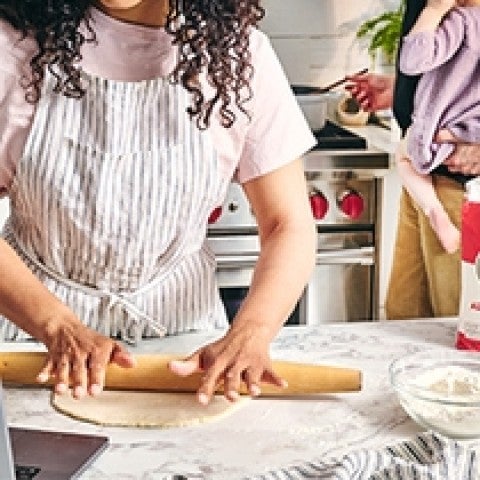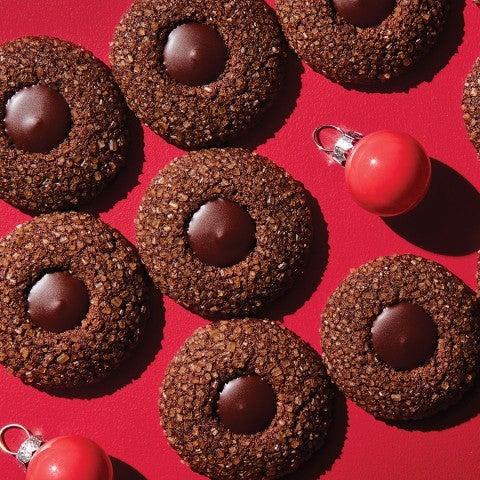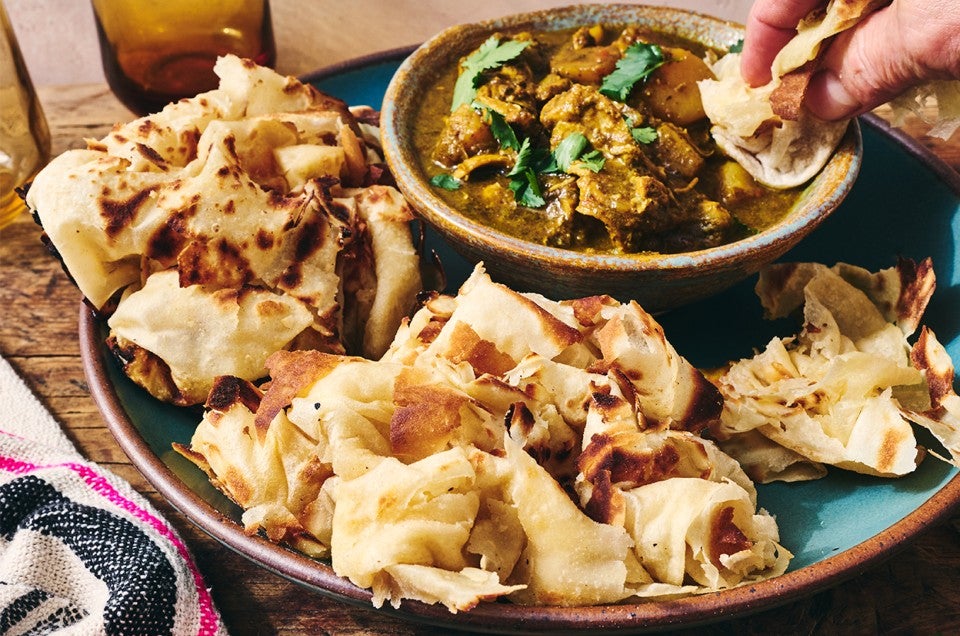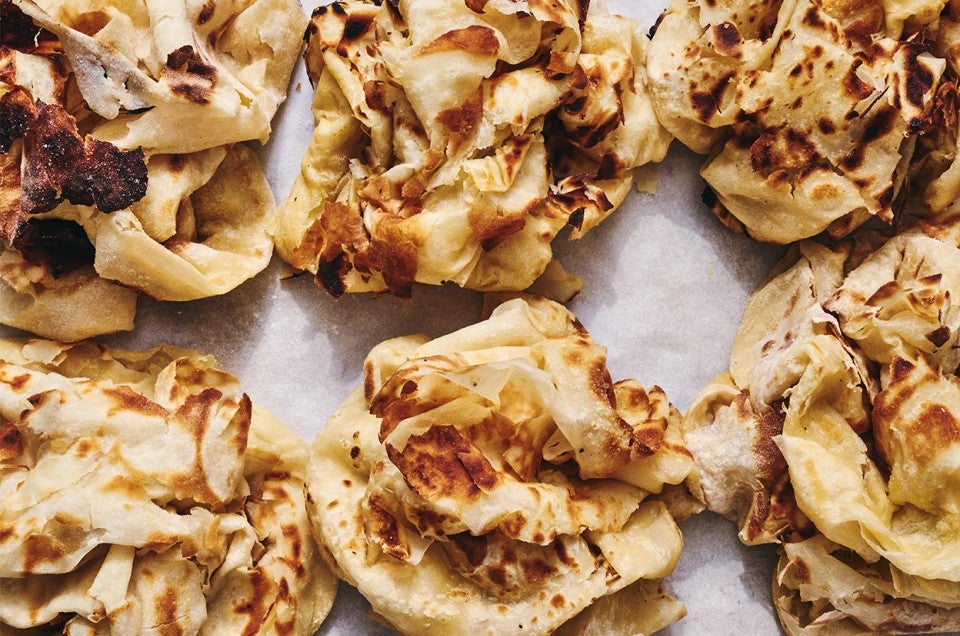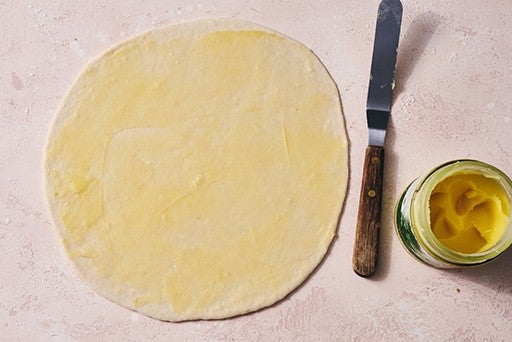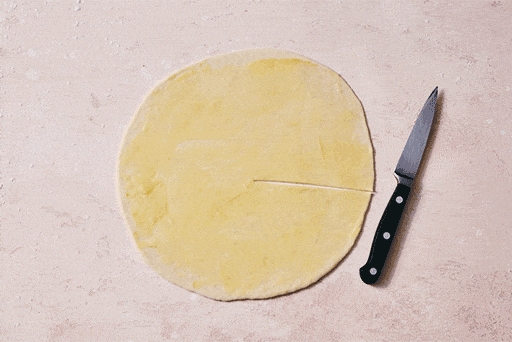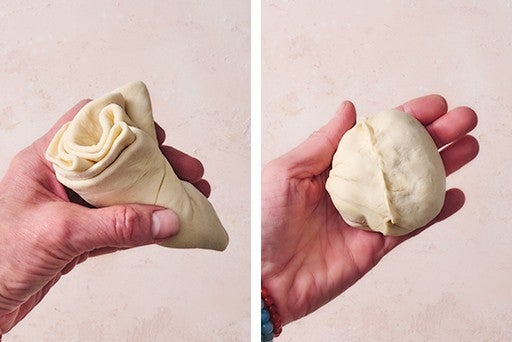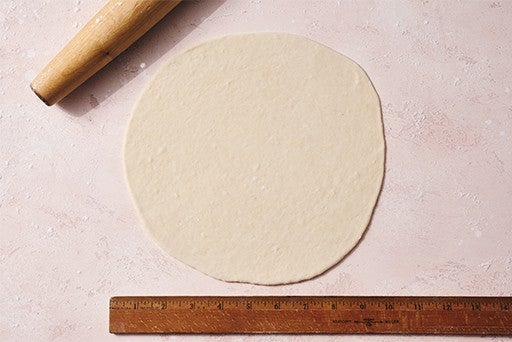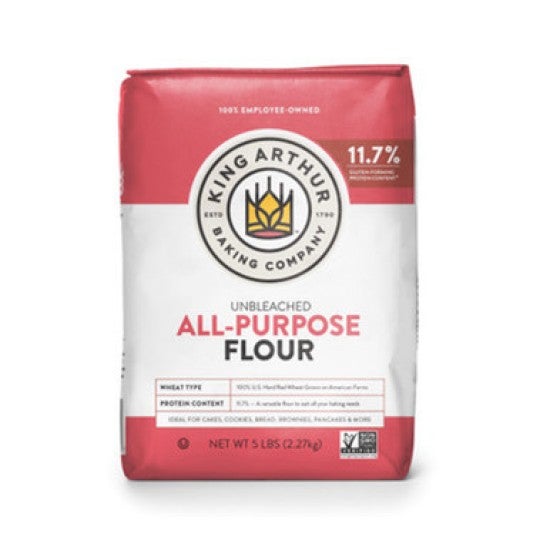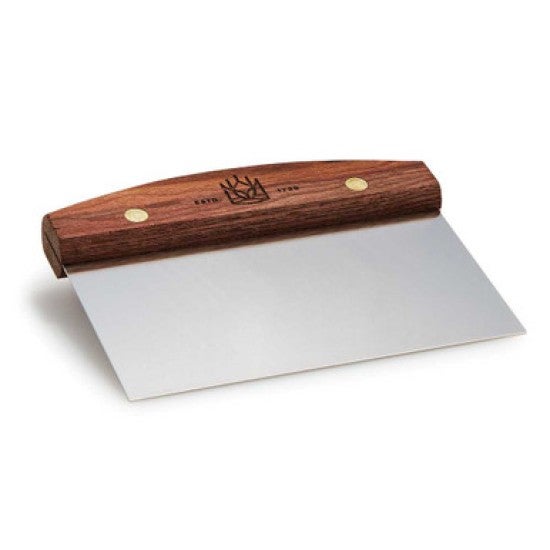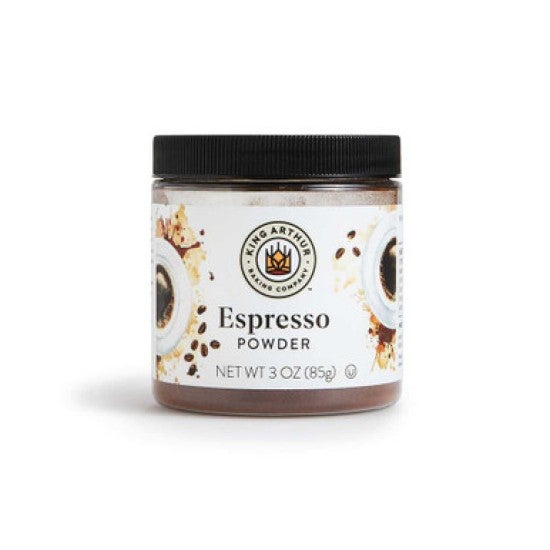-
Weigh your flour; or measure it by gently spooning it into a cup, then sweeping off any excess.
-
In a large bowl, whisk the flour, brown sugar, baking powder, and salt to combine.
-
In a large liquid measuring cup, combine the milk and water. Add about 1 cup (227g) of the mixture to the dry ingredients and stir, using the handle of a wooden spoon or a dough whisk, until the dough starts to come together. Switch to using your hands to incorporate any dry patches of flour, folding and kneading it gently. Add the remaining liquid in 1/2-cup (113g) increments, folding and pressing down on the dough after each addition to form a cohesive, tacky dough, about 3 to 4 minutes. Avoid heavily kneading the dough to ensure a tender final texture in the buss up shut.
-
Rub the surface of the dough with 1 tablespoon (11g) ghee and press to flatten slightly in the bowl. Cover and let the dough rest at room temperature for 10 minutes.
-
After the rest, divide the dough into eight equal pieces (about 139g each) and shape into rough balls. Working with one piece at a time, place the dough seam-side down and roll it underneath your cupped hand to form a smooth ball about 3" in diameter. Place the dough ball on a parchment-lined baking sheet. Repeat with the remaining dough pieces and then allow them to rest at room temperature, covered, for 10 minutes.
-
On a lightly floured work surface, use a floured rolling pin to gently roll one dough ball into a 10" to 11" round. Add 1 tablespoon (11g) ghee to the center. Use the back of a spoon or small offset spatula to spread the ghee evenly over the surface, all the way to the edge.
-
Use a paring knife to cut a single slit from the center of the round to the edge. Working from the slit, fold the flap of dough up and over onto itself to form a triangle. Continue folding the dough over itself until you’ve formed a loose cone.
-
Holding the cone like an ice cream cone, pinch all the open parts at the top together, then gently press them down into the cone to seal. Use your finger to press the tip of the cone into itself, compressing the cone into a disk about 1 1/2" thick. Set the shaped dough aside on the baking sheet and cover. Repeat this process with the remaining dough.
-
Let the shaped dough rest at room temperature, covered, for at least 2 hours or up to 6 hours. The dough should feel soft after resting. (At this stage, you can refrigerate or freeze the dough. See “tips,” for details.)
-
When ready to cook the buss up shut, generously flour a work surface. Use a floured rolling pin to roll out each piece of dough into a 10" to 11" round, about 1/4" thick (even thickness is important here).
-
Heat a tawa, large cast iron skillet, or electric skillet over medium-low heat and brush a thin layer of ghee evenly over the surface. Place one dough round onto the cooking surface and cook for about 30 to 45 seconds while you brush the top with a thin layer of ghee. Use a medium offset spatula or the handle of a wooden spoon to flip and cook the other side for 30 to 45 seconds, then brush with a thin layer of ghee. Flip a third time and cook for a final 30 to 45 seconds, brushing the top with a final thin layer of ghee, until the surface is flaky and spots begin to brown.
-
Using the medium offset spatula and the handle of a wooden spoon in tandem, repeatedly hit, rotate, flip, and fold the buss up shut on the cooking surface. This process releases steam trapped in the layers of the dough, creating a flaky, ripped texture. The fully cooked flatbread should resemble a “busted up” (torn) shirt in a small, crumpled pile.
-
Line a large bowl with a clean, dry kitchen towel. Place the finished buss up shut in the bowl and cover with the towel to keep warm. Repeat the cooking process with the remaining dough pieces. Serve immediately.
-
Buss up shut is best enjoyed the day they’re made, preferably fresh and warm. If necessary, reheat in a preheated 250°F oven, wrapped in a clean kitchen towel set on a rack-lined baking sheet, for about 10 minutes.




